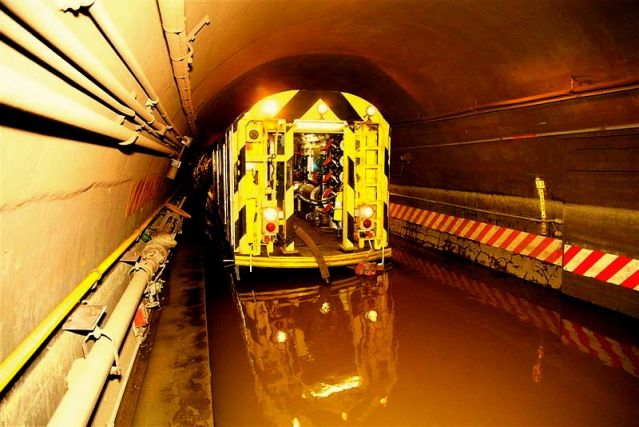Education
Purposeful Pedagogy
Relevant environmental education in uncertain times
Posted October 15, 2013
Pumping water out of the Cranberry Street Tunnel, which carries the A and C trains between Brooklyn and Manhattan Hurricane Sandy

Pumping water out of the Cranberry Street Tunnel, which carries the A and C trains between Brooklyn and Manhattan
Hurricane Sandy
Sandy’s wreckage is the new norm for children coming of age in an era of rising temperatures and tides. How do we prepare them for such a future? Education is one answer, but what kind? Charles Saylan, Executive Director of the Ocean Conservation Society, wants the content to be more relevant because, as he told Yale e360, “I don’t think that environmental education as it’s currently taught directly affects the lives of the students we’re teaching.” Saylan and his colleague Daniel Blumstein, Professor of Ecology and Evolutionary Biology at UCLA, worry that “students are required to learn facts without being given the ability to manipulate and analyze those facts.” *
Alec Appelbaum, an educator and writer who lives in New York City, understands Blumstein and Saylan’s concern. For him, civic life and life science are intertwining systems; his teaching is rooted in this interdisciplinary perspective. Working with small groups of public and private middle and high school students, in and near New York City, Appelbaum presents a blend of climate science, psychology, civics, economics, negotiation, and design. All of his students get a primer in recognizing cognitive biases, a sketch of the carbon cycle and greenhouse effect, along with a challenge to make a real place more salutary as the climate shifts.
Role-playing is central to Appelbaum’s program. Students were asked to place themselves in imaginary public-life scenarios. In so doing they “took climate change from the domain of abstract effects, and from the menu of discrete events like Hurricane Sandy, into a constant real-time consideration. This led them all to think about biodiversity, feedback effects, and co-benefits,” said Appelbaum. Role-playing accentuated relevance and prepared the students for testing ideas like real world designers. For example, at one school, students created a biodiversity index and green infrastructure plan for a site along the East River. Later they found out that their concept closely tracked to one in a publicly funded proposal. “Most important,” says Appelbaum, “the students showed that they could assume a future full of uncertainty and respond to it from a range of perspectives.”
* Blumstein DT, Saylan C (2007) The Failure of Environmental Education (and How We Can Fix It). PLoS Biol 5(5): e120. doi:10.1371/journal.pbio.0050120


